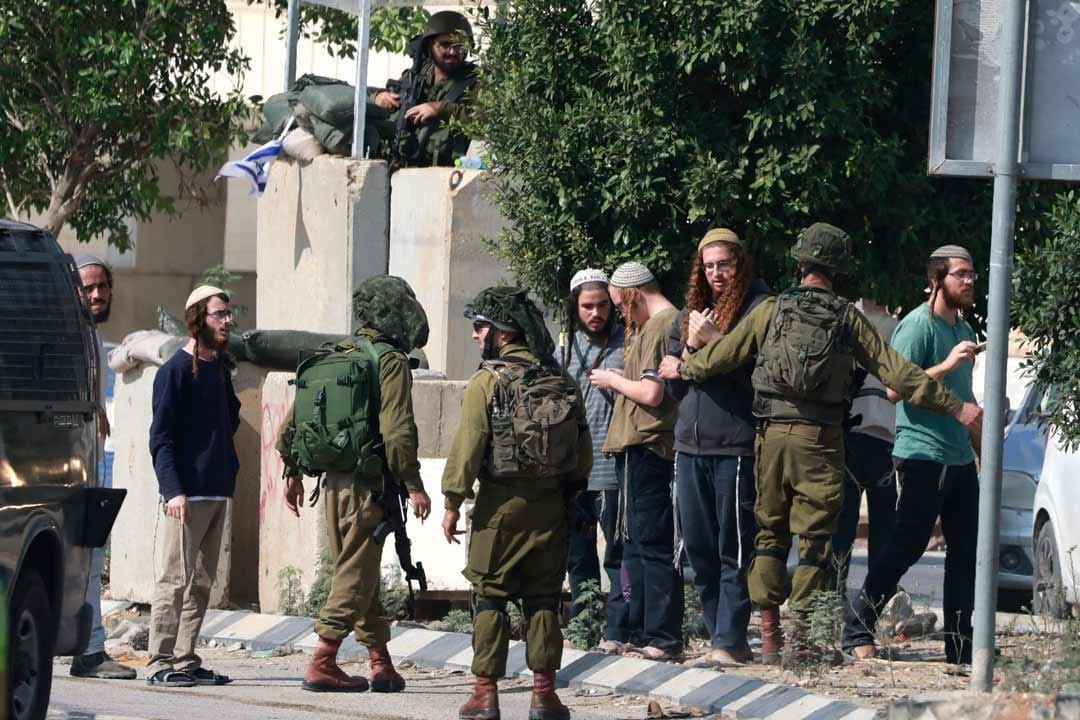A violent incident occurred near the Palestinian village of Umm al-Kheir in the South Hebron Hills of the West Bank on Monday, where a Palestinian man was reportedly run over by an Israeli bulldozer, and another was shot and seriously injured in clashes with Israeli settlers and armed civilians.
According to Palestinian sources and local witnesses, the man was run over by the bulldozer during an altercation, after which a separate individual was shot by an Israeli armed with a handgun.
Video footage from the scene shows an Israeli civilian confronting Palestinians, firing shots into the air with a bulldozer visible behind him.
The incident unfolded amid escalating tensions in the area, where clashes between Palestinian residents and Israeli settlers, often backed by the army, have become frequent.
The Israel Defense Forces (IDF) stated that the events were triggered after “terrorists”.
This is a term used by the IDF to describe Palestinians throwing stones, attacked Israeli civilians near the Carmel settlement in the Judea Brigade sector.
They reported that one armed Israeli civilian opened fire toward the Palestinian assailants, with confirmed reports of casualties on the Palestinian side but no injuries among Israeli forces.
In response, IDF and police forces were dispatched to the scene, and the incident has been handed over to the Israel Police for further investigation.
This incident forms part of an ongoing pattern of violence and land disputes in Umm al-Kheir.
Umm al-Kheir is a Palestinian Bedouin village located adjacent to the Israeli settlement of Carmel in Masafer Yatta, South Hebron Hills.
Over recent years, the community has faced:
- increasing settler violence,
- frequent home demolitions by Israeli authorities on grounds of “illegal” construction, and,
- encroachments on their land by settlers attempting to expand settlement infrastructure.
According to reports by the United Nations Relief and Works Agency (UNRWA) and human rights organizations, Palestinian residents of Umm al-Kheir have endured repeated attacks by armed settlers.
These include property damage, attempts to fence off their grazing lands, water pipe tampering, and intimidation, all often occurring in the presence or with the support of Israeli soldiers.
The broader context involves a longstanding struggle over land rights and Israeli settlement expansion in the West Bank.
Umm al-Kheir residents are part of a Bedouin community historically displaced and marginalized, with restricted access to building permits and essential services.
This environment has led to a humanitarian crisis highlighted by international organizations.
They warn of deteriorating living conditions and imminent forced displacement of hundreds of families in Masafer Yatta, including Umm al-Kheir.
The violence reported on July 28, 2025, thus fits within a pattern of settler-Palestinian confrontations.
These are marked by escalating aggression, destruction of property, and injuries to Palestinian civilians.
The injuries are inflicted by both settlers and occasionally armed Israelis recognized as civilians by the IDF.
Video evidence from recent events also reflects the high tensions on the ground.
They showed armed settlers and Israeli civilians confronting Palestinians in forceful and sometimes violent ways.
Israeli military presence is often described as passive or permissive toward settler actions.
Palestinian residents claim that Israeli forces have frequently failed to protect them from settler attacks or to stop ongoing land confiscations and property demolitions.
In summary, the incident near Umm al-Kheir where a Palestinian man was run over by an Israeli bulldozer and another seriously wounded by gunfire reflects both an acute exposure of localized violence and a microcosm of broader conflict dynamics in the West Bank.
The IDF attributes the violence to Palestinian stone-throwing, while Palestinians describe sustained settler aggression supported by military enforcement actions.
This tense and dangerous situation is aggravated by ongoing settlement expansion.
It is also due to forced displacement risks, and deteriorating humanitarian conditions impacting vulnerable Palestinian communities in the South Hebron Hills.
This event and the broader pattern underscore the complexity of security, legal, and humanitarian challenges.
These are especially in contested areas of the West Bank where civilian lives and properties are increasingly imperiled amid protracted conflict and disputed land claims.
International bodies continue to call attention to these issues as critical to any future prospects for peace and stability in the region.



